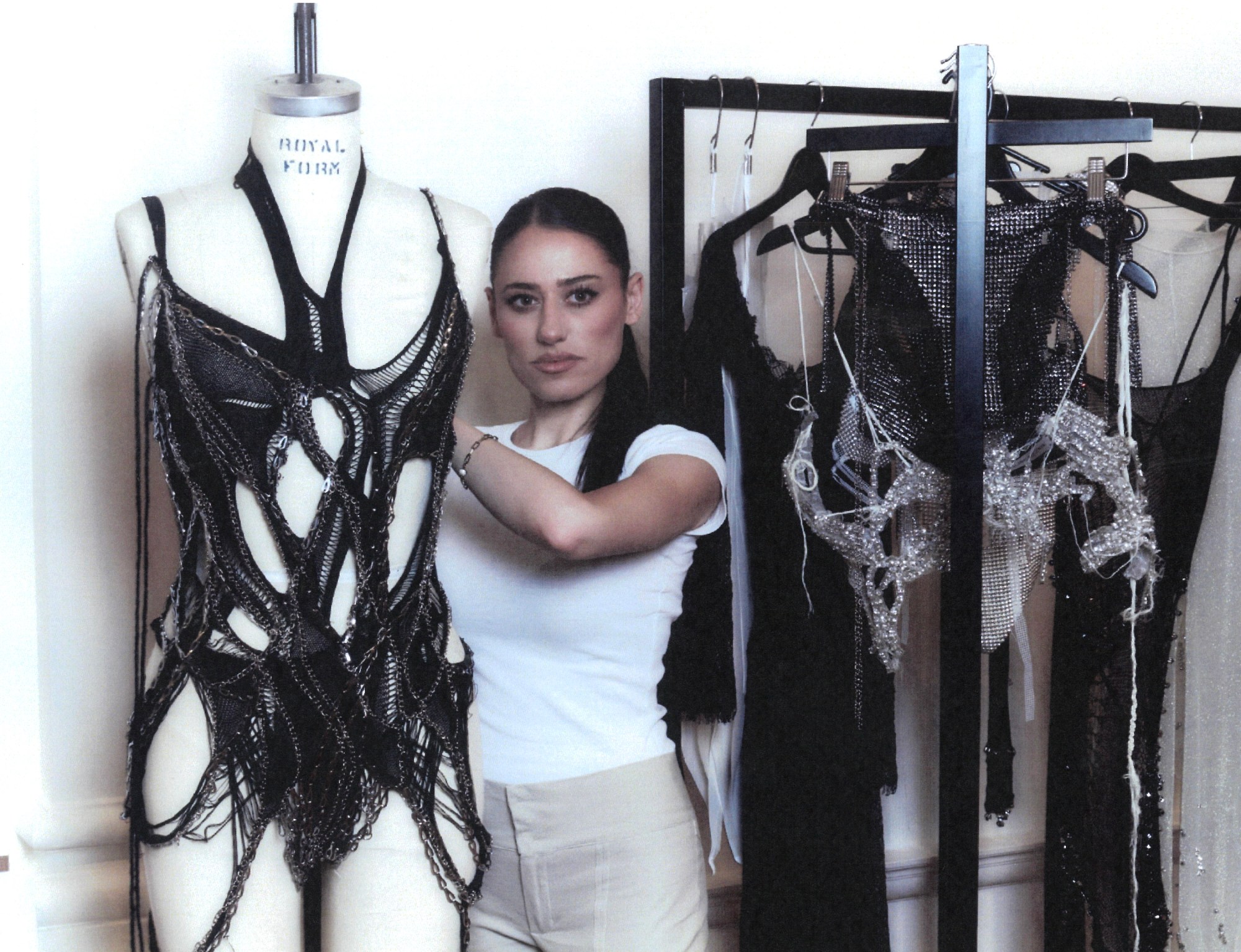Fall’s fashions have transformed the runways and our Instagram feeds into a veritable corps de ballet: ensembles of ‘it’ girls in pointe shoes and tutus; Bella Hadid looking more prima ballerina than model-of-the-year in pale pink legwarmers. The ballet look, it turns out, is easy to mimic; the dance, itself, not so much. Luckily, Caroline Reznik is well-versed in both. With the release of her first ready-to-wear capsule, “Mirroire Noire”, the Australian ballet dancer-turned-fashion designer takes centre stage, shining a new spotlight on fashion’s balletcore.
Caroline grew up with dance. When she was 13, she left school to become a full-time ballerina, travelling the world to dance with international companies. Both of her parents were ballet dancers before her. When Caroline’s mother retired, she became a costumier for the Australian ballet. The designer looks back on those formative years with fondness, recalling watching her mother embroider costumes with intricate bead and lacework details that would bring dancers’ movements to life. “I always wanted to pick up some beads and some lace and copy her,” the designer reminisces.

This is precisely why the pivot from professional dancer to professional designer came so organically to Caroline. After leaving the ballet, she enrolled in Sydney’s Whitehouse Institute of Design, where she sharpened her technical abilities and tailoring, “becoming very mathematical about creating clothes,” she says, which bolstered the fluid, “malleable” design sensibilities she’d learned from her mother. From there, she transferred to the city’s University of Technology where, backed by her learned technical skills, she began developing her unique design language. Half-way through her final year, however, the pandemic hit. Lessons moved from the classroom to the computer screen and while much of her cohort dropped out, discouraged by their diminishing prospects, Caroline doubled down on her dream, finding hope in the work itself.
“At the time, I was doing a lot of research into the correlation between fashion and pattern during the 18th to 20th centuries. And I was really inspired by ballet composers like Sergei Diaghilev, who brought together collaborations between dancers, set designers and fashion designers during a time of global pandemic,” she says. “Uncovering that parallel brought me hope and gave me the motivation I needed while things seemed to be crashing down around me.”
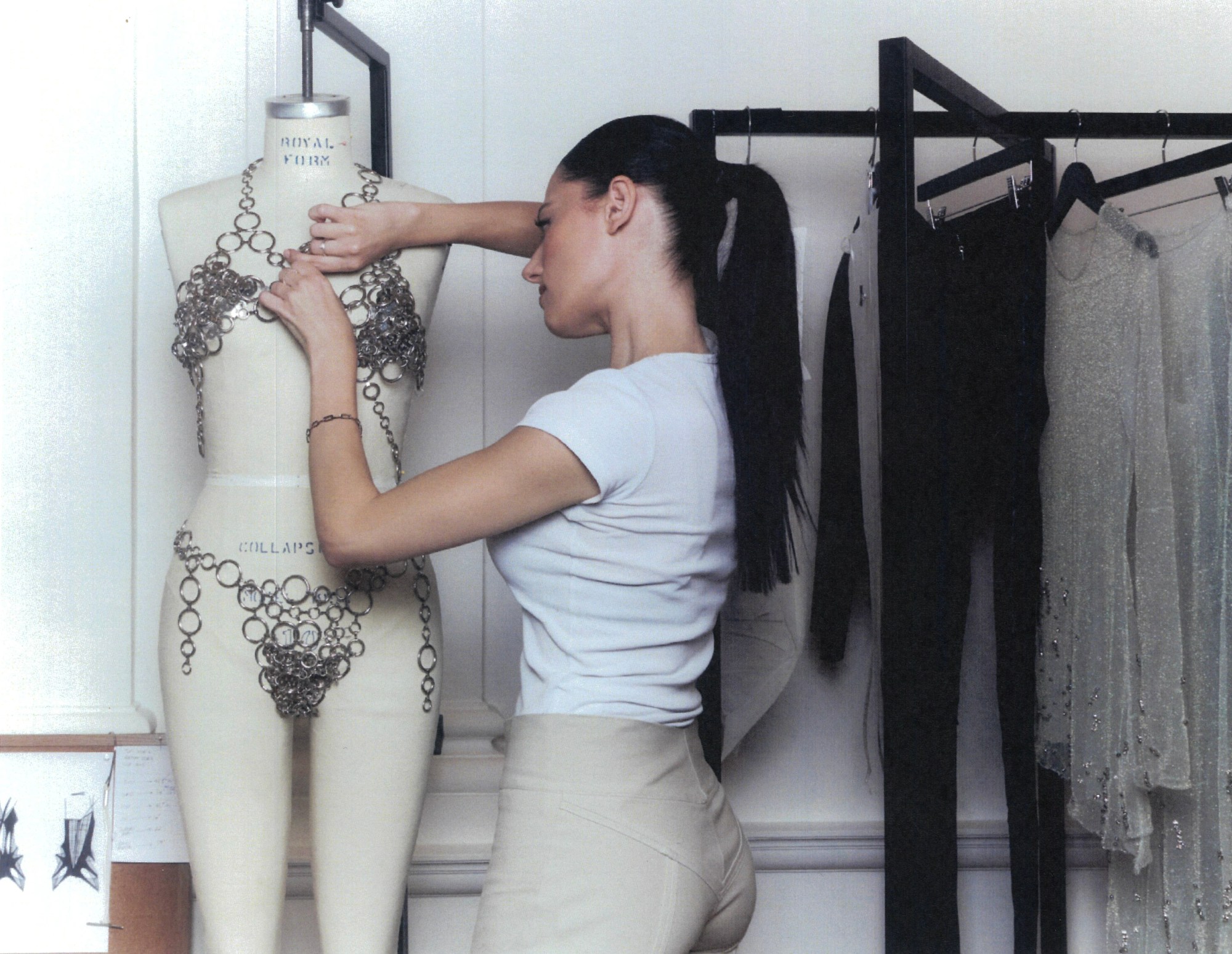

Lockdowns didn’t prove as stifling as one might think for a creative who trades in movement; the aerial freedom of a jeté or the graceful length of an arabesque. “When I design, I’m thinking of the mechanics of how I would dance, so I completely understand the rotation in an arm or how much of a slit you would need to lift a leg.” Designing from her bedroom, from the confines of lockdown, Caroline found new, more minute ways of transcribing movement on the body, methodologies that married the dynamism of dance with the stasis of lockdown.
In one such experiment, Caroline manipulated a tiara (a trinket gifted to her by her mother) across the glass plate of a scanner, creating a kinetic map that would inform the placement of crystals upon the body. These dazzling, glitched out scans would later become the undulous and asymmetric silhouettes of Caroline’s draped crystal pieces.

Much of Caroline’s process begins with textiles, whether she’s layering lace or linking pieces of hardware. She created the Dual Realm bikini by arranging and rearranging bits of deadstock metal, “building and layering them, through trial and error, to a point that they create a new texture,” she says. “A new way of expressing metal on the body.” Through this type of innovation, this reaching towards the novel and as-of-yet unimagined, Caroline is creating her own fantasy world, a “second realm”, inspired by the fairytale ballets she used to dance. She points to Swan Lake, in particular: its “love and heartbreak”, “softness and hardness”, “strength and vulnerability”, “black and white”. “There are two sides [to Odette, the ballet’s protagonist] and it’s always about the fight between the two,” she explains. “I think that duality exists in my work as well.” The designer’s Dual Realm bikini, made from interlocking hoops, drips from the body, harsh metal transmuted to flowing liquid in Caroline’s hands.
This multiplicity within Caroline’s work, combined with what she called the “heightened femininity” of ballet codes, has attracted an array of fans, especially from the LGBTQ+ communities. “When people message me or speak with me about the clothes, they tell me that they feel empowered or they feel as though the clothes are speaking to their identity, expressing who they are as women or their feminine identity,” she says.

Her work has also attracted performers from the world of pop music, most notably Cardi B, Rosalìa and Doja Cat. After revealing her graduate collection on Instagram in late 2020, Brett Alan Nelson, Doja’s creative director, reached out to Caroline, requesting a sample. ”I didn’t have a spare to lend him,” she recalls, in lieu, drafting up a custom creation. “I didn’t know exactly what it was for. I just knew which textiles [Brett] loved from the collection, so I started creating the piece intuitively on the stand in my bedroom.” From Caroline’s makeshift studio, the piece travelled overseas to appear in Doja’s darkly sensual “Street” music video.
Subscribe to i-D NEWSFLASH. A weekly newsletter delivered to your inbox on Fridays.
While performers like Doja Cat are clearly drawn to the spectacular, kinetic nature of Caroline’s work, the designer also attributes the pull of her designs to a few other factors. “The pandemic really highlighted the state of the industry, with a lot of overconsumption of commercial pieces, and brands were starting to look like a wave of the same,” she says. “I think that created a space in the industry for emerging designers, where their work was being highlighted for its rawness, its craft, and its originality. Pop artists, in particular, were excited to see something new.”
Caroline strives for innovation, she notes, in much the same way as the ballet dancers, composers and costumiers before her. She looks back to her thesis research, “understanding the way that ballet costumes evolved throughout the centuries as dancers would improve their techniques, having higher legs, bigger jumps. That also reads into fashion garments today, how the ways we live and the way we move, even now, ignites this need for newness.”
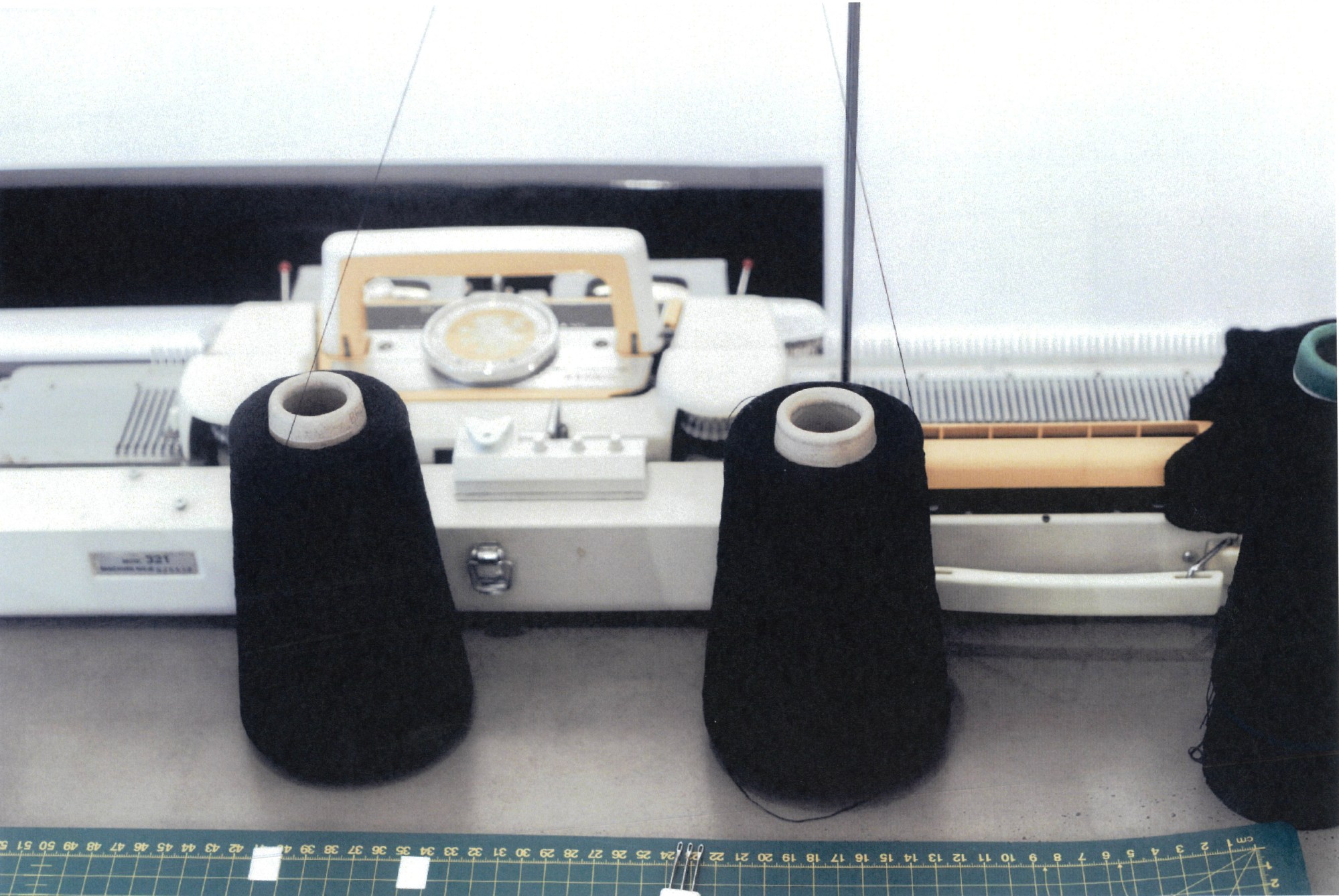
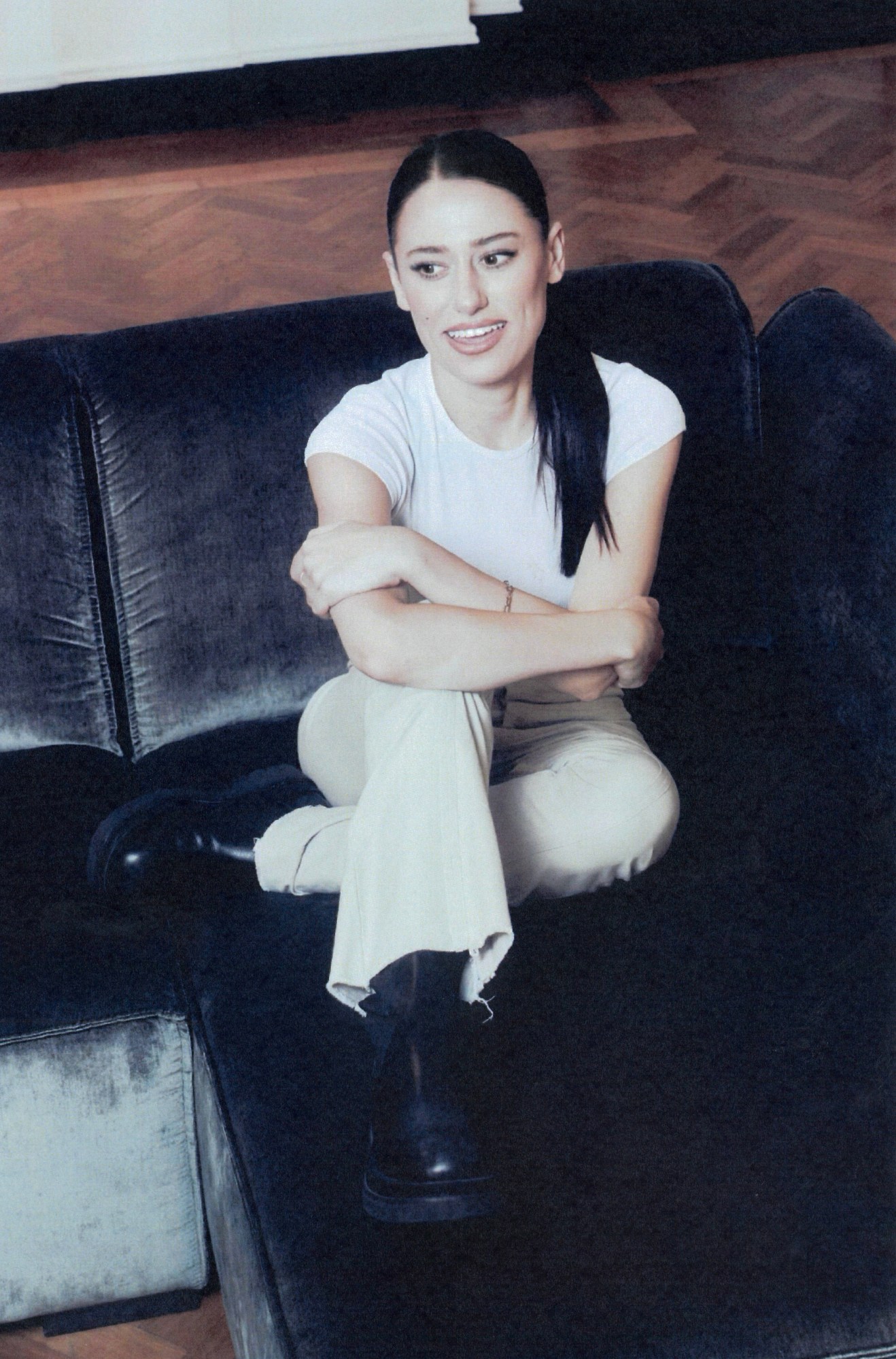
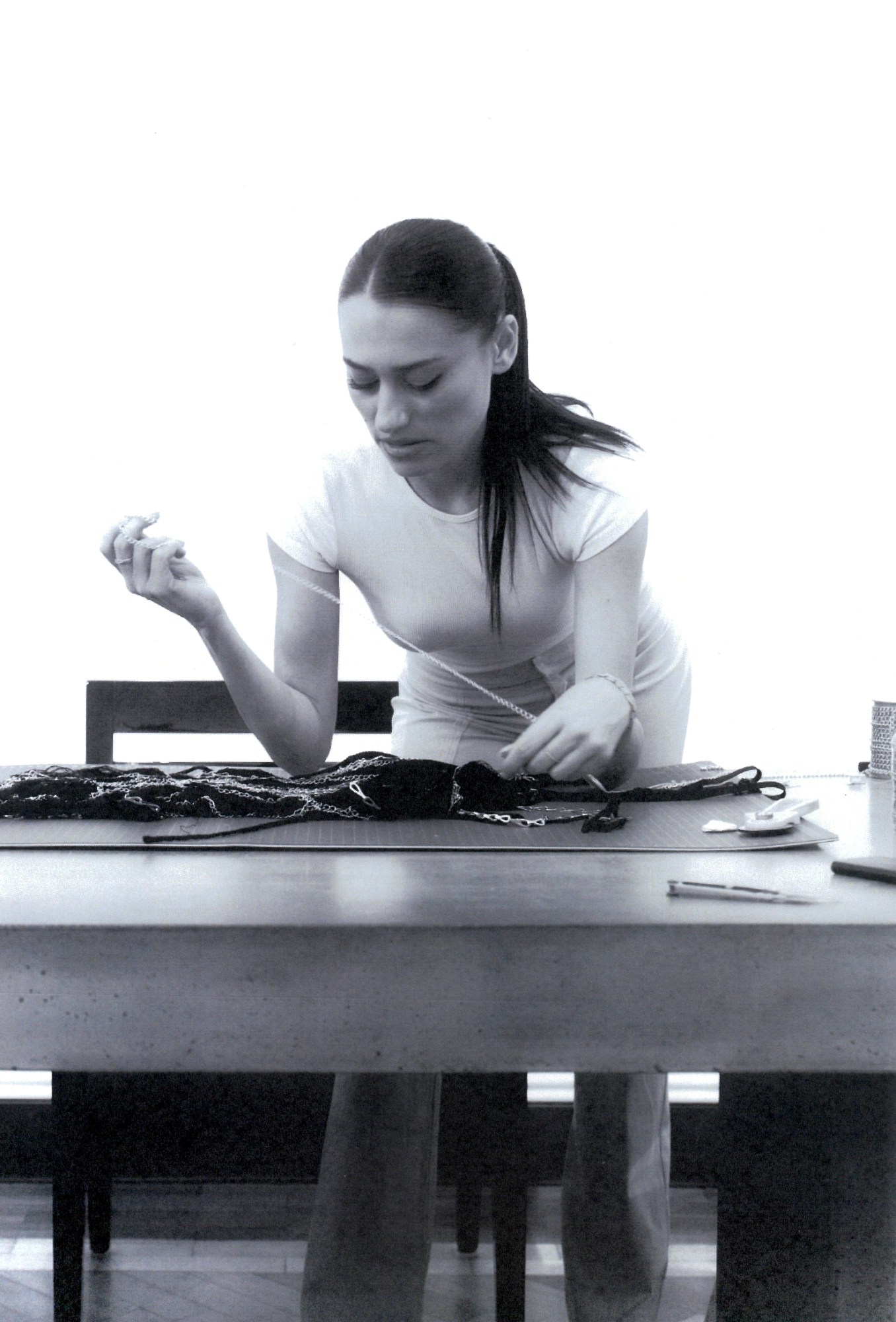
Credits
Photography Nathaniel Dunwell
